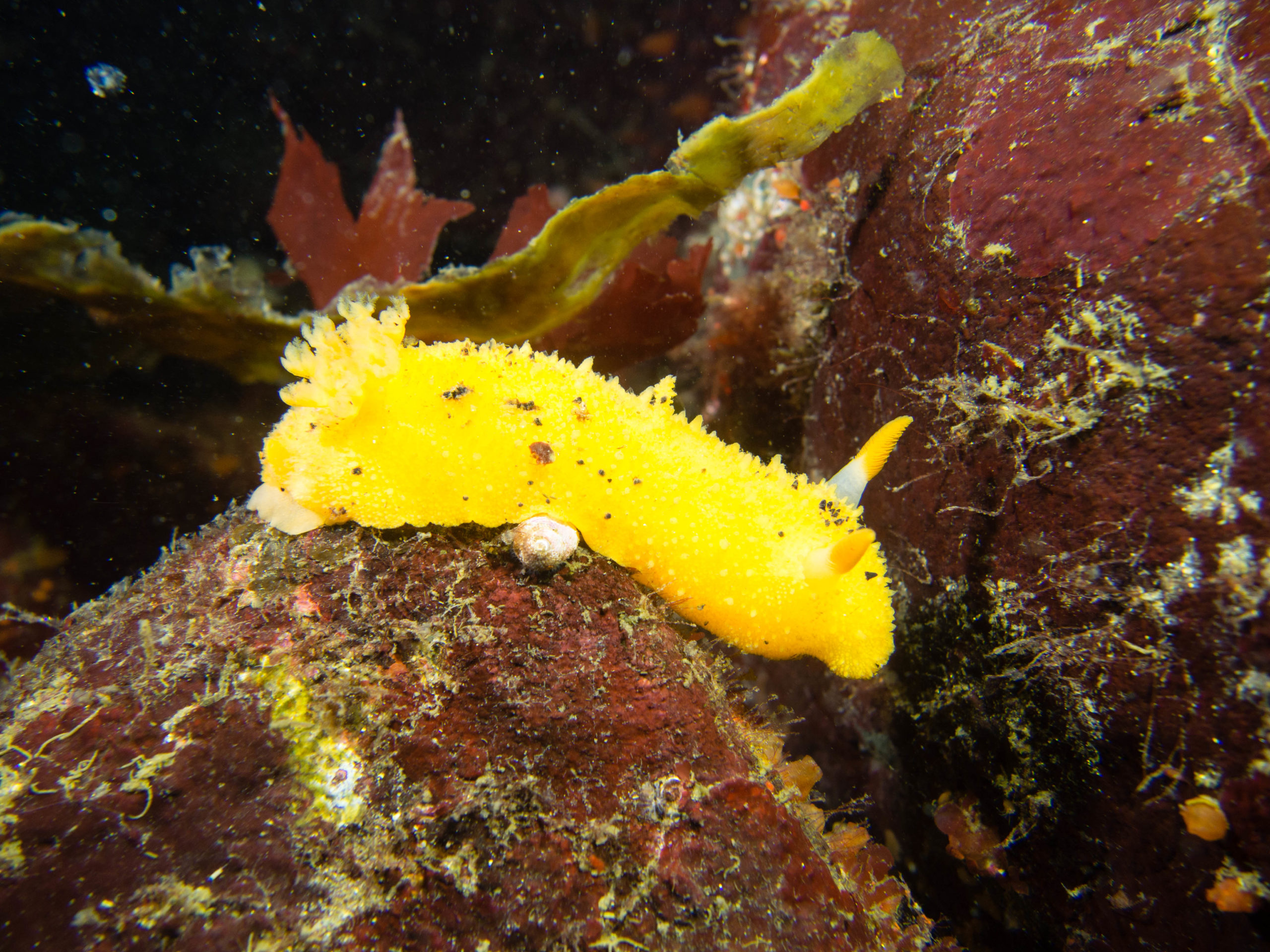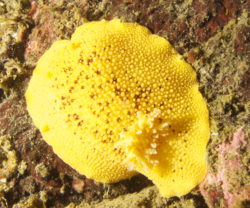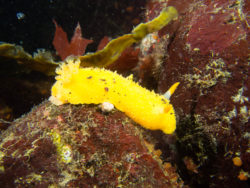
Sea Wonder: Monterey Sea Lemon
We wouldn’t blame you for thinking the Monterey sea lemon (Doris montereyensis) was an aromatic or tasty plant but it’s actually a marine invertebrate. It’s named for its bright yellow coloration, and it’s not so tasty as fish and lobsters have been observed spitting sea lemons out when they accidentally eat them!
Description
The Monterey Sea Lemon is a nudibranch (marine invertebrate) related to snails, clams, and octopuses. It does not have a shell and is brightly colored with small black spots along its back. Its coloration comes from the sponges it eats, and its coloration serves as a warning sign for potential predators – stay away the sea lemon could be poisonous! Since their color comes from what they eat, they could range from slightly orange to almost white but are most often bright yellow.
At the front of the sea lemon are two fleshy “horns” or rhinophores used for scent and taste reception, bumps called tubercles along its back, feathery gills on the backside of its mantle (body), and its radula (foot) on its underside used for filing prey off of solid structures. At maximum size, they are only about 10 inches long.
Diet & Habitat
Sea lemons live in rocky shores where the tide exchanges twice daily. They can live as deep as 300 feet below the surface but are often found in much shallower areas. Their range is from Alaska down to Baja California in Mexico, which includes Greater Farallones, Cordell Bank, Monterey Bay, and Channel Islands national marine sanctuaries.
These scavengers feed primarily on sponges (bread crumb sponges to be exact) using their radula to file the sponge’s flesh from the rocks or other structures to which they are attached. Experts aren’t quite sure which animals are predators to Monterey sea lemons but nudibranchs are known to feed on each other.
Life History
Like all other nudibranchs, the sea lemon has the ability to produce both sperm cells and eggs, which allows them to mate with any other sea lemon they encounter. This is especially helpful since sea lemons only live for about a year.
Spawning season occurs between November and March and each individual sea lemon can release two million eggs at once, in the shape of light-yellow ribbons. Due to predation and other factors, fewer than one percent of all larvae survive into adulthood. Due to their short lifespan, sea lemons advance through their life cycle quite quickly.
Threats & Conservation
Sea lemons are abundant in the ocean and will remain so if their ecosystems stay healthy. Their primary threats include pollution, habitat destruction, and environmental changes associated with climate change such as warming temperatures and rising sea level.


